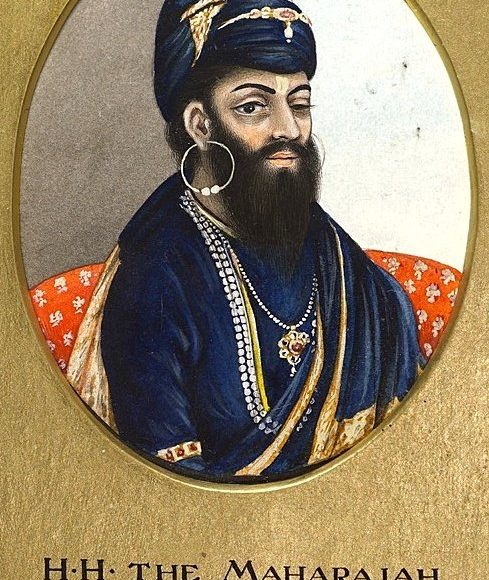MAHARAJA RANJIT SINGH JIBAN VRITTANTA, by Brahmamohan Mallick, is a monograph in Bengali on the life of Maharaja Ranjit Singh (1780-1839). Published in 1862, within a quarter of a century of the Maharaja\’s death, it is one of the earliest biographies of the Maharaja written in any language. The book is divided into eight chapters, the first one dealing with the social and political milieu in which Guru Nanak (1469-1539), founder of the Sikh faith, preached his message, and second with the ancestry and birth of Ranjit Singh.
His early military exploits form the subject matter of the third chapter, bringing the story of the career of the Maharaja up to the Anglo-Sikh treaty of 1809. Chapters IV to VI record his further conquests. Conquests of the late 1820\’s together with Burnes\’ visit to Lahore form the central theme of the seventh chapter. The monograph, concludes with an estimate of the Maharaja as an able administrator and nation-builder.
References :
1. Mukhopadhyay, Harimohan, Banga Bhasar Lekhak. Calcutta, 1966
2. Gupta, Jogendranath, Ranjit Singh. Calcutta, 1923
3. Gupta, Bipin Behari, Puratan Prasanga. Calcutta, 1923
4. Mitra, Subal Kumar, Saral Bangld Abidhan. Calcutta 1923
“MAHARAJA RANJIT SINGH JIBAN VRITTANTA” by Brahmamohan Mallick:
The work is a comprehensive biography of Maharaja Ranjit Singh, the formidable founder of the Sikh Empire in Punjab. It begins by recounting his early years, portraying a young man shaped by the martial traditions and spiritual fervor of Sikh culture. The narrative then follows his ascent from a regional chieftain to a unifier of fragmented territories, highlighting his determination and innate leadership qualities in the face of a complex, often turbulent socio-political landscape.
Mallick details Ranjit Singh’s military campaigns and strategic prowess, documenting his brilliant maneuvers on the battlefield as he defended and expanded his realm. The biography provides insight into how the Maharaja consolidated various Sikh misls (confederacies) and transformed them into a centralized and formidable state. His successes against external adversaries and his skillful use of diplomacy are underscored as key elements that allowed him to create a stable and powerful polity.
Beyond his military achievements, the work emphasizes Ranjit Singh’s administrative innovations and progressive reforms. The biography examines how he established a system of governance that promoted justice and religious tolerance, uniting diverse communities under his rule. It also touches on his patronage of arts and culture and his commitment to secular principles, which helped in creating a legacy that was as much about statecraft and social harmony as it was about martial valor.
Overall, Brahmamohan Mallick’s biography not only chronicles the major events and battles of Maharaja Ranjit Singh’s life but also delves deeply into his personal qualities—his courage, charisma, and visionary outlook. It presents him as a multifaceted leader whose bold actions and enlightened rule left an indelible impact on the history of Punjab and continue to inspire admiration in subsequent generations.



